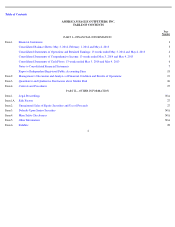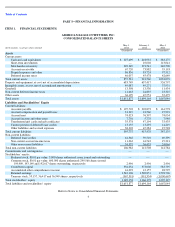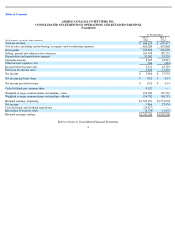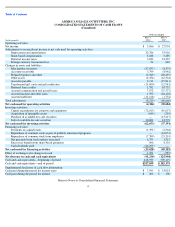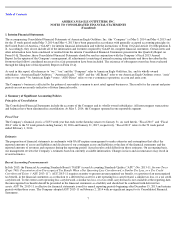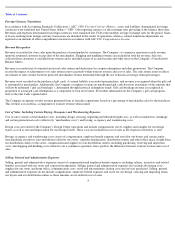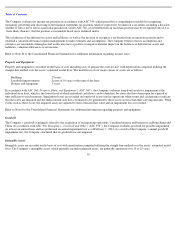American Eagle Outfitters 2013 Annual Report Download - page 10
Download and view the complete annual report
Please find page 10 of the 2013 American Eagle Outfitters annual report below. You can navigate through the pages in the report by either clicking on the pages listed below, or by using the keyword search tool below to find specific information within the annual report.
Table of Contents
Other Income (Expense), Net
Other income (expense), net consists primarily of interest income/expense, foreign currency transaction gain/loss and realized investment
gains/losses.
Other-than-Temporary Impairment
The Company evaluates its investments for impairment in accordance with ASC 320, Investments – Debt and Equity Securities (“ASC 320”).
ASC 320 provides guidance for determining when an investment is considered impaired, whether impairment is other-than-temporary, and
measurement of an impairment loss. An investment is considered impaired if the fair value of the investment is less than its cost. If, after
consideration of all available evidence to evaluate the realizable value of its investment, impairment is determined to be other-than-temporary,
then an impairment loss is recognized in the Consolidated Statement of Operations equal to the difference between the investment’s cost and its
fair value. Additionally, ASC 320 requires additional disclosures relating to debt and equity securities both in the interim and annual periods as
well as requires the Company to present total other-than-temporary impairment (“OTTI”) with an offsetting reduction for any non-credit loss
impairment amount recognized in other comprehensive income (“OCI”). There was no net impairment loss for investment securities recognized
in earnings during the 13 weeks ended May 3, 2014 or May 4, 2013.
Cash and Cash Equivalents and Short-term Investments
The Company considers all highly liquid investments purchased with a maturity of three months or less to be cash equivalents.
As of May 3, 2014, there were no short-term investments recorded on the Company’s Consolidated Balance Sheet.
As of May 4, 2013, short-term investments include treasury bills and term-deposits with a maturity of greater than three months, but less than
one year.
Unrealized gains and losses on the Company’s available-for-sale securities are excluded from earnings and are reported as a separate component
of stockholders’ equity, within accumulated other comprehensive income, until realized. When available-for-sale securities are sold, the cost of
the securities is specifically identified and is used to determine any realized gain or loss.
Refer to Note 3 to the Consolidated Financial Statements for information regarding cash and cash equivalents.
Merchandise Inventory
Merchandise inventory is valued at the lower of average cost or market, utilizing the retail method. Average cost includes merchandise design
and sourcing costs and related expenses. The Company records merchandise receipts when both title and risk of loss for the merchandise have
transferred to the Company.
The Company reviews its inventory levels to identify slow-moving merchandise and generally uses markdowns to clear merchandise.
Additionally, the Company estimates a markdown reserve for future planned permanent markdowns related to current inventory. Markdowns
may occur when inventory exceeds customer demand for reasons of style, seasonal adaptation, changes in customer preference, lack of consumer
acceptance of fashion items, competition, or if it is determined that the inventory in stock will not sell at its currently ticketed price. Such
markdowns may have a material adverse impact on earnings, depending on the extent and amount of inventory affected. The Company also
estimates a shrinkage reserve for the period between the last physical count and the balance sheet date. The estimate for the shrinkage reserve,
based on historical results, can be affected by changes in merchandise mix and changes in actual shrinkage trends.
Income Taxes
The Company calculates income taxes in accordance with ASC 740, Income Taxes (“ASC 740”), which requires the use of the asset and liability
method. Under this method, deferred tax assets and liabilities are recognized based on the difference between the Consolidated Financial
Statement carrying amounts of existing assets and liabilities and their respective tax bases as computed pursuant to ASC 740. Deferred tax assets
and liabilities are measured using the tax rates, based on certain judgments regarding enacted tax laws and published guidance, in effect in the
years when those temporary differences are expected to reverse. A valuation allowance is established against the deferred tax assets when it is
more likely than not that some portion or all of the deferred taxes may not be realized. Changes in the Company’s level and composition of
earnings, tax laws or the deferred tax valuation allowance, as well as the results of tax audits may materially impact the Company’s effective
income tax rate.
9



